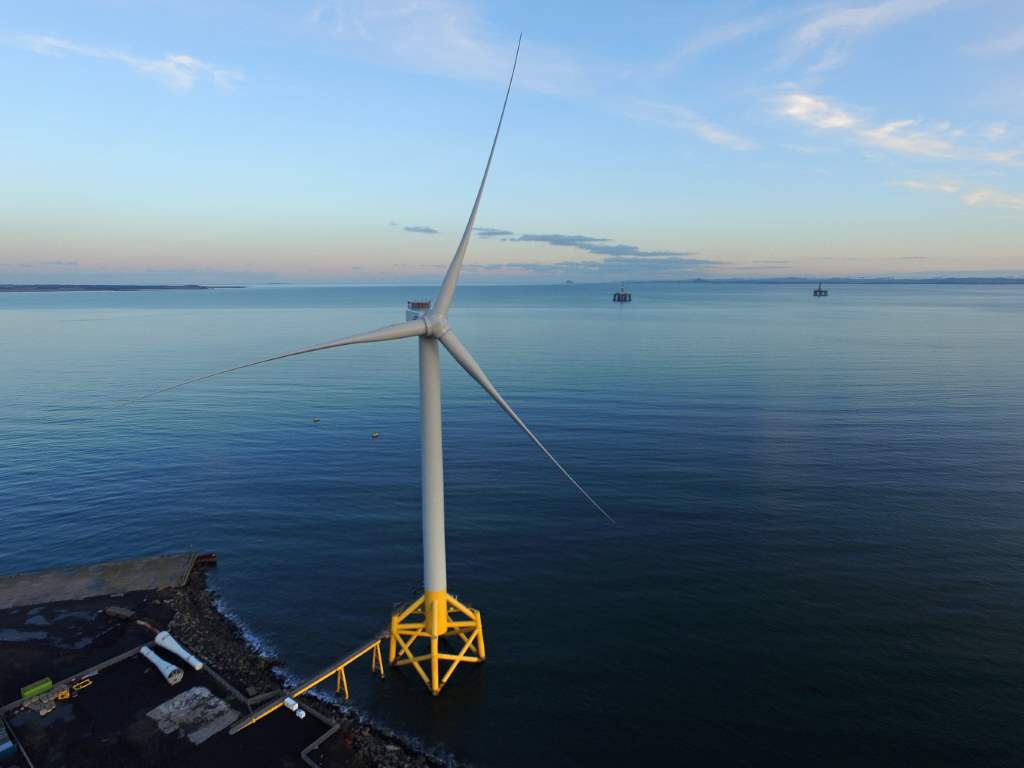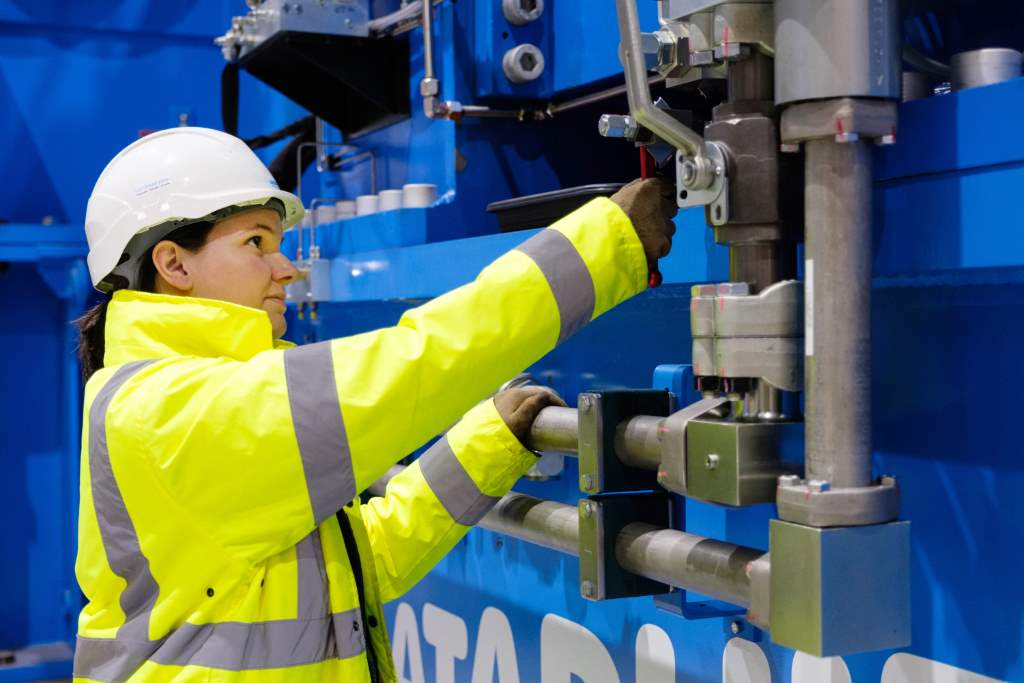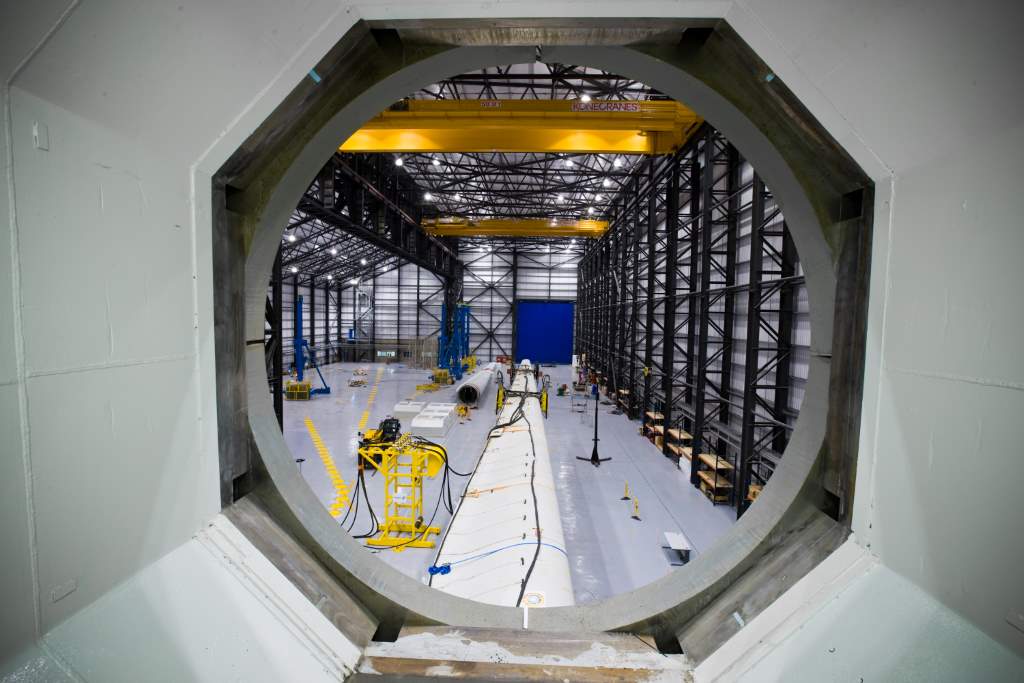Powering up with offshore opportunities

The UK is pioneering greener offshore forms of power generation, which is a huge potential market for domestic companies. Ed Hill learns more about how the Offshore Renewable Energy (ORE) Catapult is facilitating the move to this technology and assisting companies keen to be involved.
It’s often stated that the transition to greener technologies of energy generation offers huge potential growth for UK industry, but what is the best way for companies to enter the supply chain and offer innovations, particularly if they have no previous experience in the sector?
One of the main bodies involved in helping the UK develop manufacturing in this market is the Offshore Renewable Energy (ORE) Catapult. Established in 2013 by the UK Government, the organisation was set up to help the development of offshore wind, wave, and tidal energy generation and encourage growth in those sectors.
It has developed world-leading test and demonstration facilities and engineering and research expertise, which is aimed at accelerating technology development, reducing risk and cost, and enhancing UK-wide development. ORE Catapult has operations in Glasgow, Blyth, Levenmouth, Aberdeen, the Humber, the East of England, the South West, and Wales.

Andrew Macdonald, director of offshore wind development and operations at ORE Catapult outlines the potential that there is in this market for UK-based companies: “The UK Government’s target is that 30% of the country's electricity will be generated from offshore wind by 2030. This presents a unique opportunity to create new jobs and drive economic growth in regions that have traditionally relied on industries such as manufacturing, shipbuilding, and fishing, that have faced decades of industrial decline.
“The Government has a target of 50GW of offshore wind to be installed by 2030 and the catalysts of major leasing rounds across the UK, such as ScotWind Leasing, developed by Crown Estate Scotland and Round 4 by The Crown Estate, are accelerating projects around our shores by delivering over 30GW of potential projects. Other future leasing opportunities are also being developed, in the North Sea, through the Innovation and Targeted Oil and Gas (INTOG) leasing process, as well as in the Celtic Sea.”
“Furthermore, the Offshore Wind Sector Deal set out an ambitious partnership between government and industry to raise the productivity and competitiveness of UK companies to ensure the country continues to play a leading role as the global market grows in the decades to come. The sector has committed to increasing domestic company content to 60% by 2030 – which presents a huge opportunity in the ORE market.”
Three programme approach
ORE Catapult helps companies wanting to get involved in offshore renewable energy through three main initiatives.
Launch Academy is a national technology accelerator programme focusing on near-to-market solutions. It is designed to enhance the UK’s offshore wind supply chain, enable greater UK content and support cost reduction through innovation.
In the last three years the programme has raised £15.4 million total investment, and filed 48 patents altogether – boosting technology such as BladeBUG, a walking robot that inspects and repairs wind turbine blades or a 5G digital connected ocean being developed by JET Connectivity.

Another initiative is the Fit 4 Offshore Renewables (F4OR) programme, designed to support the development of a competent, capable and competitive supply chain. It works with companies to support their entry and growth in the industry by building the tools and knowledge to succeed.
In the last few years, the programme has helped more than 80 businesses, supported over 30 contract wins and accelerated an 85% growth in company turnover. 30% of companies that have taken part in F4OR had no previous significant business in offshore renewables.
One company, Balmoral Comtec, that joined the F4OR programme and achieved ‘granted’ status has now secured several contracts for both fixed and floating offshore wind projects and is also winning contracts in the tidal energy market.
Lastly, the Offshore Wind Growth Partnership (OWGP) is a £100 million long-term business transformation programme, established as part of the UK Offshore Wind Sector Deal, funded by the Offshore Wind Industry Council (OWIC), and delivered by ORE Catapult, to accelerate growth in the domestic offshore wind supply chain.
It aims to maximise the economic benefits of the country’s world-leading position in offshore wind by driving increased UK content into its offshore windfarms and the rapidly growing global market.
Since 2019, it has awarded over £10 million to UK companies through grant funding and business transformation programmes, supported 157 projects and backed the creation of over 100 jobs.

Another company that has worked with ORE Catapult is PD&MS. Originally established in the oil and gas sector, the Aberdeen-based company is now transitioning to be a key supplier for future wind developments such as ScotWind and other future European projects, and extending its services globally.
Mr Macdonald continues: “It is crucial that the country has a highly skilled workforce armed with the tools needed to adapt to the evolving economic and technological landscape. This means investing in skills to identify gaps that exist and make it easier for people to transition into the sector from other industries, such as oil and gas. The Net Zero deadline is fast approaching, and to play its part in delivering this, the offshore renewable energy sector needs to increase its workforce from the current figure of 30,000, to 100,000 by 2030.”
Streaming ahead
There are also increased opportunities in the industry through technological developments such as floating wind power, wave and tidal stream energy technology.
“ORE Catapult established the Floating Offshore Wind Centre of Excellence in 2019 to reduce the cost of energy from floating wind,” Mr Macdonald explains. “This is a collaborative programme with industry, academic and stakeholder partners, created to accelerate the build-out of floating wind farms and drive innovation in manufacturing, installation, and operations and maintenance.
“The centre’s focus is now expanding. In this new phase, it will establish larger scale projects looking at build-out requirements, the supply chain, and technical and environmental challenges of deploying large-scale floating wind, where the ORE Catapult will be able to deploy the full weight of its engineering capabilities, and work with companies across supply chain sectors.

“This year we’ll also be opening our Floating Offshore Wind Innovation Centre in Aberdeen to accelerate the commercialisation of floating offshore wind throughout the UK and support development of new products, services and businesses within the sector.”
ORE Catapult is also developing tidal stream energy developments at several sites. Researchers at the Glasgow office are working on projects such as the Horizon flagship €20m project EnFAIT (Enabling Future Arrays in Tidal) which is already generating power in Shetland. Research, engineering and testing is also carried out at ORE Catapult’s National Renewable Centre in Blyth, Northumberland and its Marine Energy Engineering Centre of Excellence (MEECE) in Pembrokeshire, Wales.
In Cornwall it is spearheading the €45 million Tiger Stream Industry Energiser (TIGER) project, supported by the EU, and driving collaboration and cost reduction through tidal turbine installations in the UK and France.
Last October, ORE Catapult published a report on the cost reduction trajectory in tidal energy. The report estimates that the levelised cost of energy (LCOE) could reach £60/MWh by 2042 and £50/MWh by 2047. LCOE is a measure of the cost per unit of energy over the lifetime of a power generating plant, used to compare different methods of energy generation.
Quoting from the report Mr Macdonald continues: “Economic benefits, in recent studies from the University of Edinburgh and University of Manchester reveal tidal stream projects could generate over 80% of materials from the local supply chain, create up to 45 jobs per MW deployed – exceeding the wind and solar industries, and could contribute up to £17 billion to the UK economy by 2050. It also highlighted that the UK could capture 25% of the international market value through exports.”
Making money
So, do offshore renewables really offer homegrown companies a good source of potential income?
“Companies in the sector are creating high-quality jobs, boosting the economy, and demonstrating strong commitment to a low-carbon future that is environmentally positive and financially sustainable,” Mr Macdonald affirms. “Delivering the UK Government target of 50GW offshore wind generation by 2030 requires investment in the supply chain to meet the demands for increased capacity and capability. This investment will in turn produce wider benefits for the economy.
“Manufacturing facilities across the UK provide a range of offshore products such as blades, cables, turbine components, and installation and service vessels. From turbine supply and installation to foundation manufacture, and operation and maintenance (O&M), thousands of jobs can be created through the existence of offshore wind.

“An estimated 90,000 jobs could be created in the offshore sector by 2030, so the workforce must be trained and appointed to do the work across the supply chain. Local outreach to schools and other education centres and provision of apprenticeships will help promote long-term skills and training.
“Europe leads the way in installed offshore wind capacity, with its market estimated to be worth around £9.2 billion per year by 2030. However, there are large opportunities for growth throughout Asia, as well as North America and Africa.
“The O&M market is set to grow rapidly over the next decade. It represents a significant opportunity. By 2030, it’s expected that offshore wind O&M will be worth £1.3 billion per year to the UK economy.”
He concludes: “We are already a global leader in the offshore wind supply chain. The key is to maintain this as the global sector evolves. There’s enormous potential for the UK to build on its first advantageous moves in offshore wind.
“As the country continues to pave the way for the offshore supply chain industry, we can expect to reap continued economic benefits, as well as stay on track for Net Zero by 2050. ORE Catapult is playing a crucial role in delivering our national Net Zero targets by accelerating the growth of UK companies in the offshore renewable energy sector – so come and join us!”
For more information and events visit the ORE Catapult website.
ORE Catapult
https://ore.catapult.org.uk














